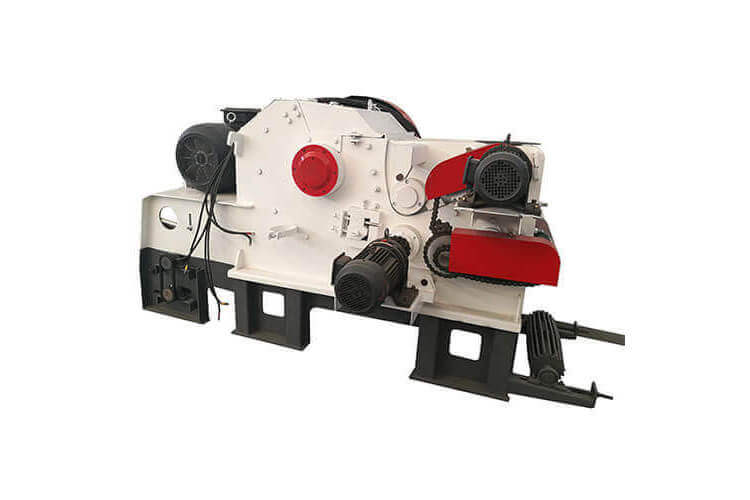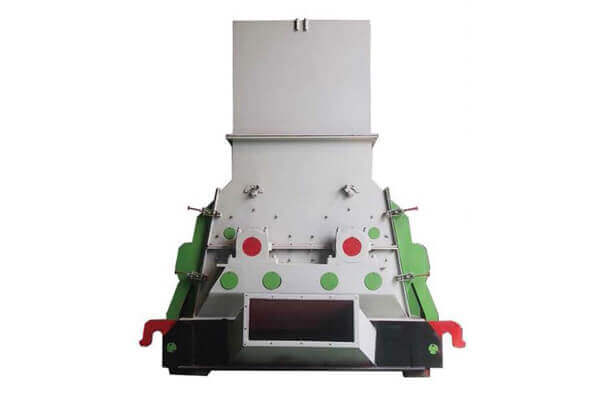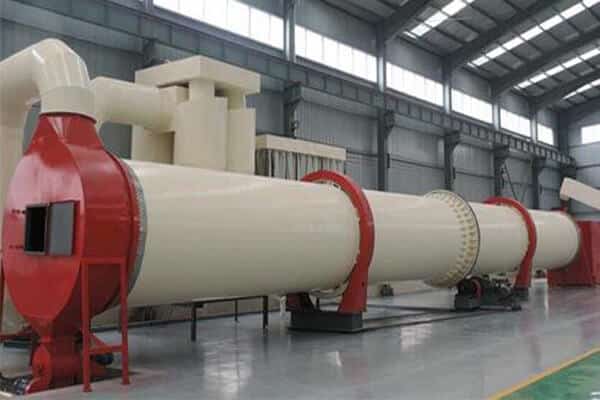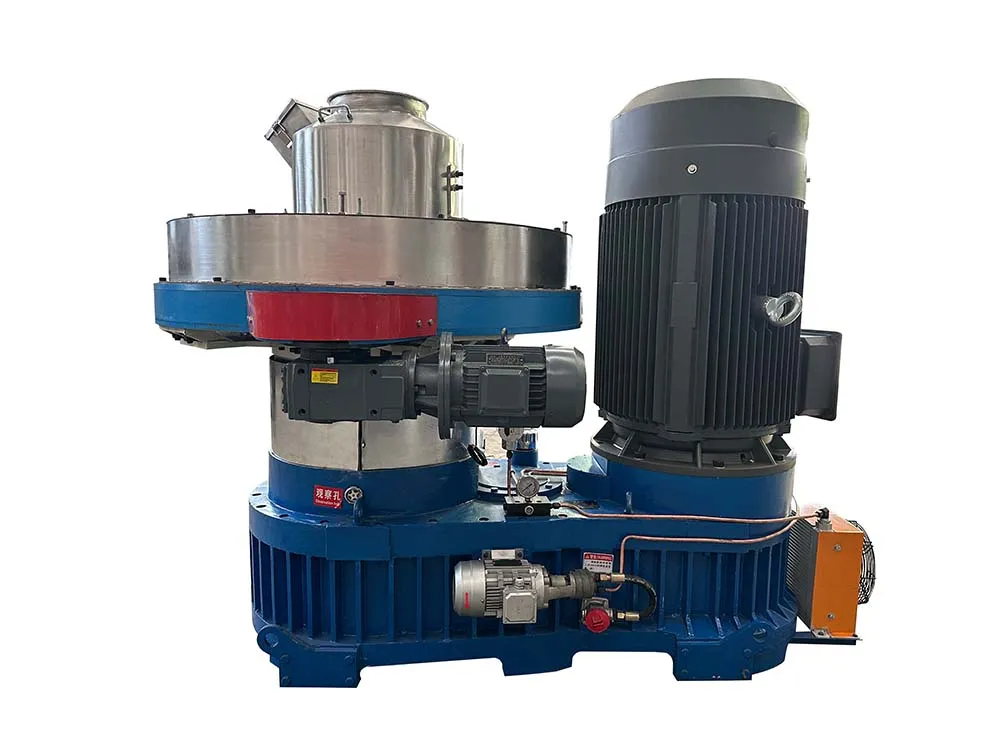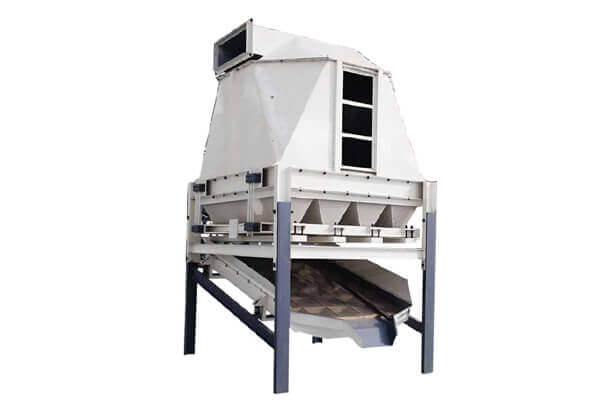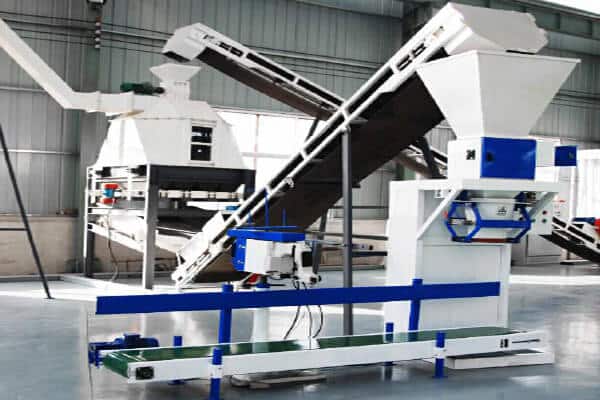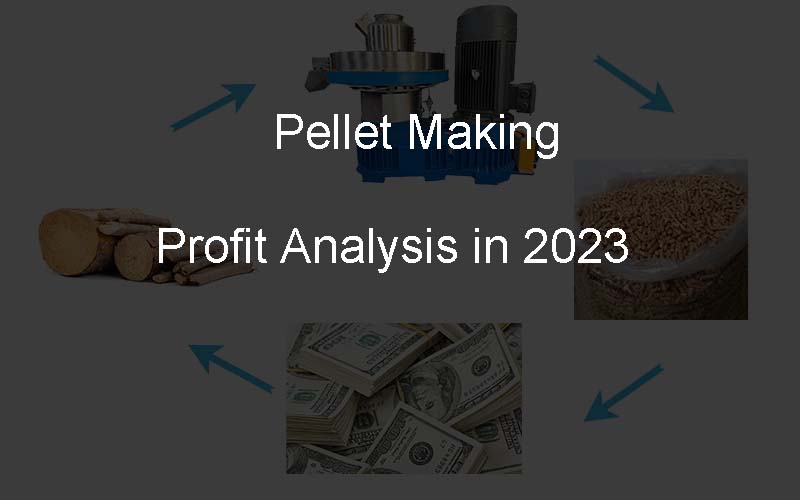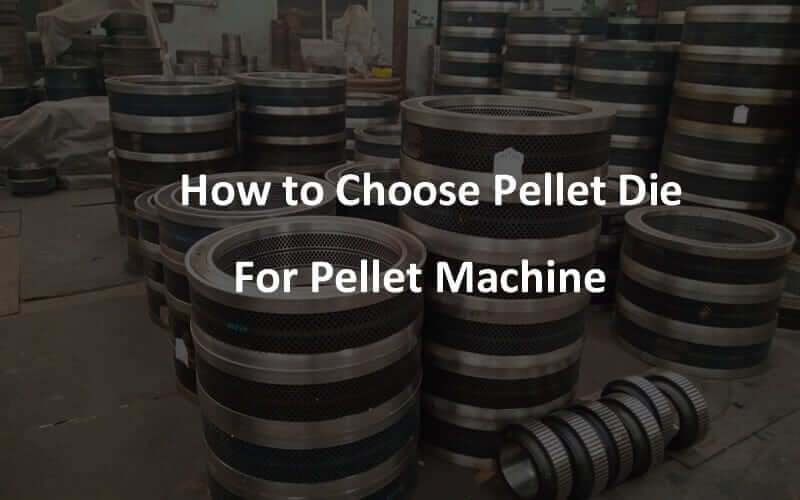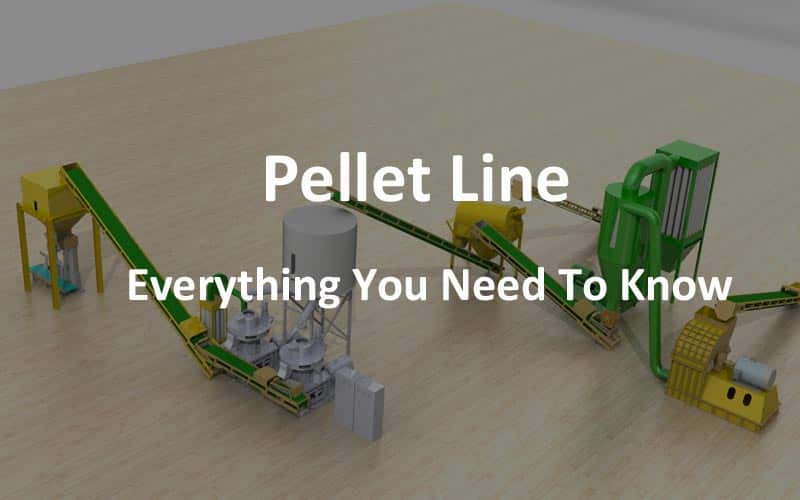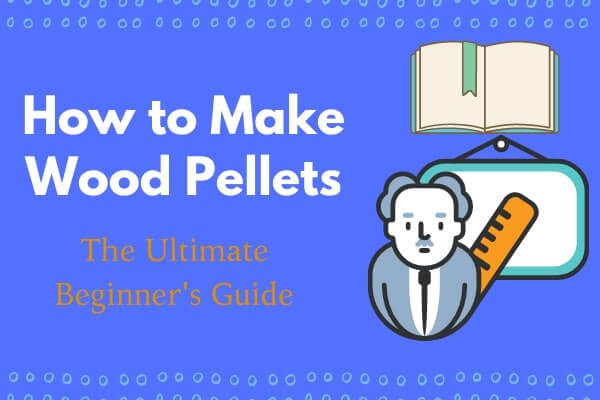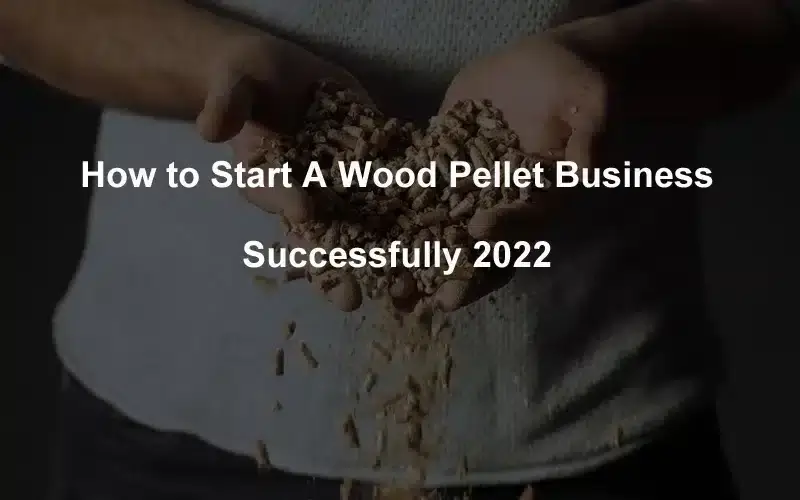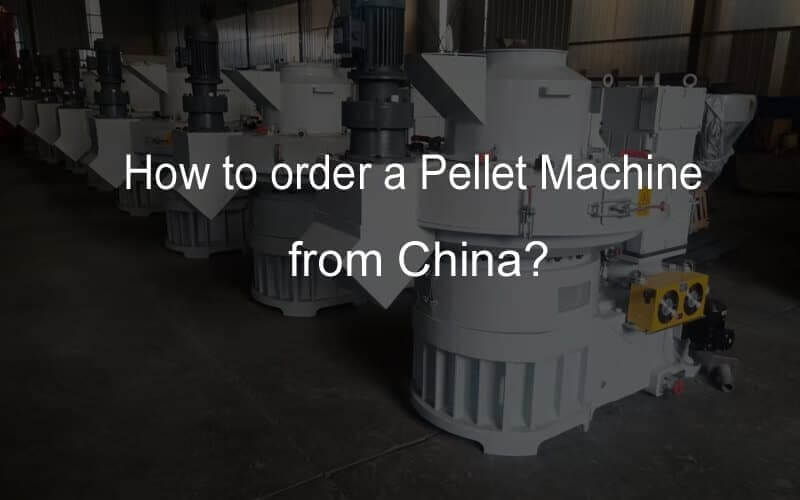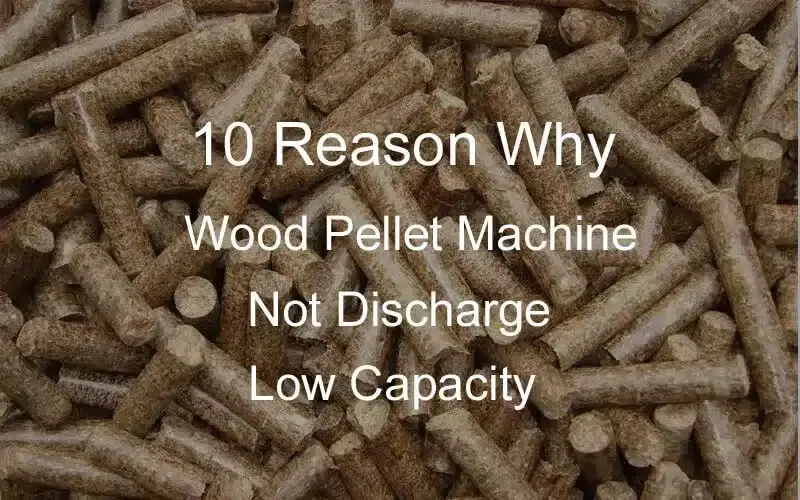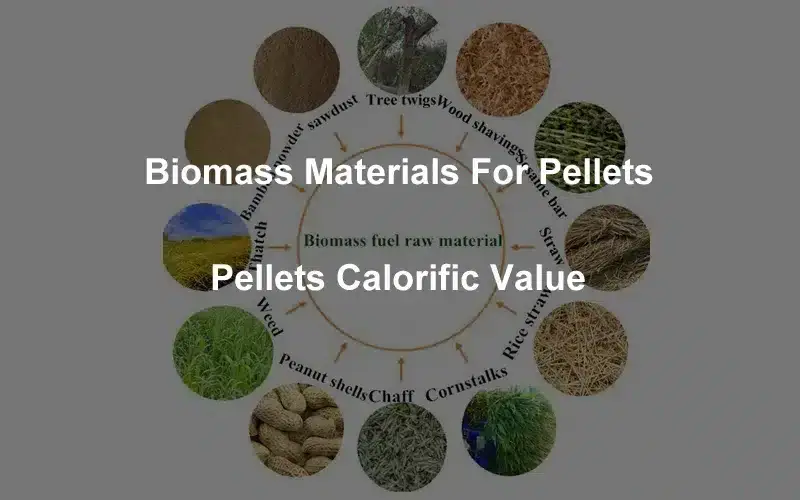Professional Pellet Production Line Solution Supplier Since 2004
Pellet Production Line - The Beginner's Guide
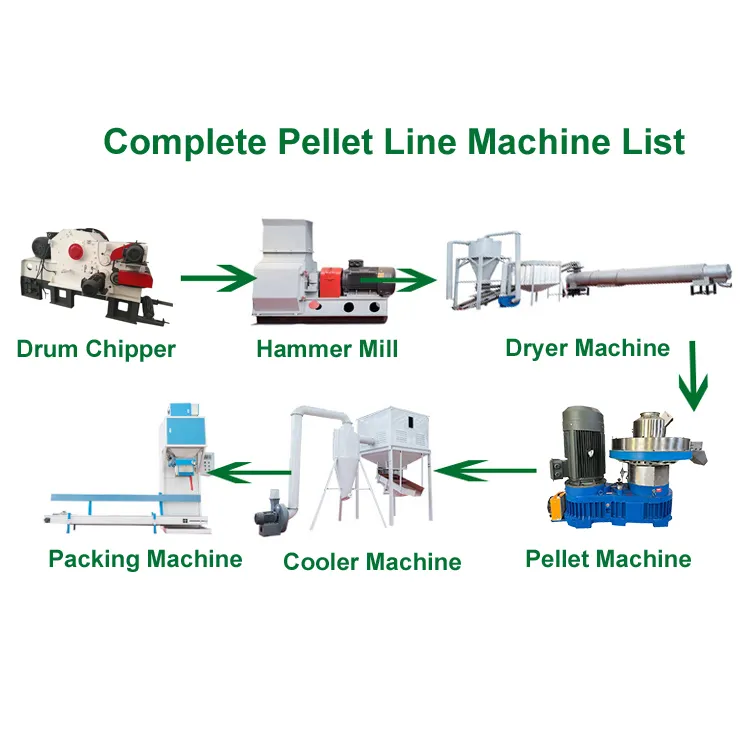
Are you looking to upgrade your small-scale wood pellet production to a more commercial scale? If you already have a homemade, cobbled-together small pellet production line at home - or if you're working with a small wood pellet line in your factory - you might be wondering what's next. The answer - you need a full pellet production line with all the bells and whistles. This will allow you to work through every aspect of pellet production all in one machine. The benefits? A device that' easier to service, easier to operate - and more economical, of course, too. Whether you're interested in a wood pellet production business, an animal feed pellet production line, or even something more unique (like a rice husk pellet production line!), this article will walk you through everything you need to know about pellet production for your home or business.
What is a Pellet Production Line?
Pellet Line, also called pellet production line, wood pellet production line, it’s a complete production line designed to make pellets. The complete process include Crushing Section, Hammer Milling Section, Drying Section, Pelletizing Section, Cooling Section and Pellets Packing Section. Based on the different pellets usages, the pellet line can be devided into two types: Biomass Pellet Line and Feed Pellet Line.
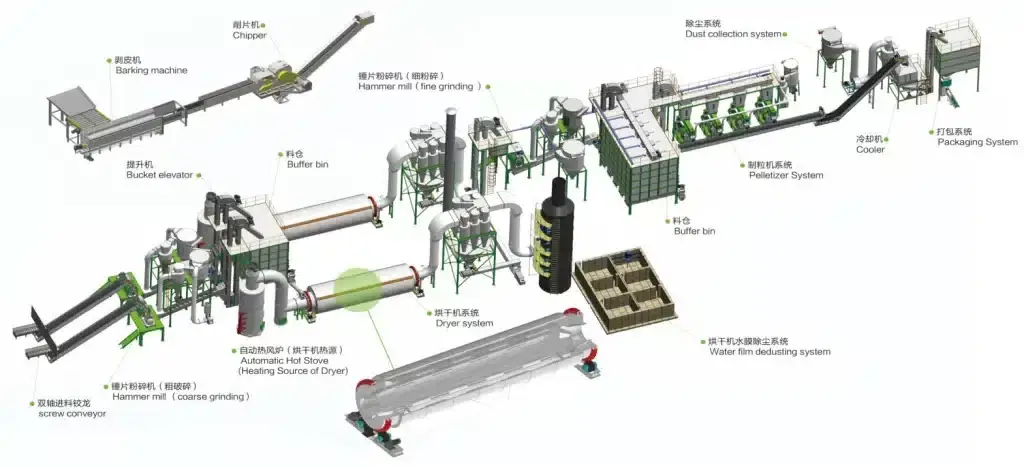
Although each pellet production line will vary in terms of how it operates and is assembled, for the most part, they all have similar construction.
A hammer mill or crusher is used to decrease the size of the raw material you’re putting into the machine. Most materials, like wood, aren’t going to be the ideal size for a pellet mill automatically. Using the hammermill will help prevent the raw material from clogging the pellet mill and leading to inefficiencies or unequal sizes of wood pellets.
A dryer is an integral feature of most pellet production lines, too. This helps reduce the moisture in the pellet mill while also removing the human error factor. When drying material for a pellet mill, there’s a bit of a Goldilocks scenario in which you don’t want the material to be too wet – but it can’t be too dry, either. The dryer is highly efficient at striking the right balance between the two.
The pellet mill is the core component in a wood or straw pellet production line (or a production line of any type, really!). It processes the material into pellets. Some pellet production lines also include pellet coolers and packers. However, these can be added or removed as needed and aren’t considered necessary for the basic functioning of the machine.
Most also have a conveyor, which is used to convey the materials from one area of the processing system to the next. This can eliminate a lot of the manpower that would otherwise be needed to transport materials from one section to the next.
How Many Types of Pellet Production Lines?
There are several types of pellet production lines you can choose from. They vary depending on your desired capacity, the size of your facility, and what kind of pellets you’d like to produce.
Most can handle all kinds of biomass, including stalks, wood, straw, rice husks, peanut shells, bamboo shavings, alfalfa, and grass.
You can break down the different types of pellet production lines even further, though, with various features that can be added or removed depending on your needs. Most small pellet production lines include components such as a hammer mill or crusher, a conveyor, a dryer, a pellet cooler, a packer, and of course, a small pellet mill.
What’s the Complete Process for Pellet Production Line?
Are you ready to start using your pellet production line? Here are some tips to help set you up for success.
Understand Which Parts and Components Are Included
Before we dive into the complete process for a pellet production line, it’s essential to address the individual components out of which the machine is made. Here’s a quick overview.
First, the wood chipper. Most pellet production lines come with a drum chipper machine. Wood chippers can process large materials, like log branches, bamboo, waste products, and big chunks of wood into pieces of smaller sizes. You can adjust the size of this material based on your unique needs.
Most produce an output of wood chips roughly three to five centimeters in size. Again, this varies, but it’s important to remember that the smaller the wood chips you want, the smaller the knives on the machine will be.
The following section is the hammer mill section. This is used to mill the wood chips produced in the first section into a smaller size (usually sawdust). It works by crushing the chips with hammer mill knives before separating them through a screener. Most of the time, the output size will be five millimeters or less.
Next is the drying section. This can be used to dry all kinds of materials from the hammer mill. It combines a heating stove and a fan, removing moisture from the material to around 10%. While you don’t want the material to be too much drier than this, as it can become difficult for the machine to form it into pellets, later on, it can’t be too wet, or your pellets will be a soupy mess!
Again, the ideal moisture rating is around 10 to 15%.
After the material has been dried (usually with a built-in rotary dryer machine, although the exact type of technology that is used does sometimes vary), it goes on to the wood pellet section, this is likely the section of the wood pellet production process with which you are most familiar – and it’s one of the most important components of the entire pellet production line!
The dried sawdust (or other dried material, depending on the type of pellet production line you are using) will be pressed into pellets in the wood pellet machine. The output size of these pellets can vary after the roller assembly and ring die to push them out. On average, the pellets will be around 6 to 10 mm in size. The size will vary depending on the market standard for pellets where you live and the type of pellets you are attempting to produce.
Last but not least, it’s time to cool and pack your pellets – hence, the cooler machine and the packing machine. The cooler machine is meant to cool down the pellet temperature from around 80 degrees Celsius to about 25 to 40. Once the pellets have cooled, they are ready to be packed into plastic bags by the packing machine.
The packing machine’s function is to process wood pellets into small bags that can be more easily transported.
Now that you have an overview of which parts are included in a pellet production line, we can go into more detail about how to operate one of these machines.
Step by Step Guide: How to Use a Pellet Production Line
To use a pellet production line, you will need to chip the wood with the drum chipper. That way, you can make sure the wood is all the right size.
Next, you’ll screen the materials. This is done to make sure they don’t have impurities in them that will affect the outcome of your finished product and potentially damage the machine. That includes things like bits of stone, metal, or plastic. Some pellet production lines do come with built-in magnets to help get rid of this debris, too.
Your next step is to dry the raw materials with the dryer (usually a drum or rotary dryer, although this can vary). This will ensure that all materials have the right moisture content.
Next, you’ll force the material through the die hole of the pellet mills. This is all fully automated with a pellet production line, with material pushed from one step to the next with conveyors.
Your final steps involve cooling, packing, and storing the pellets. The pellets need to be cooled before they are packed, or they can adhere together. This will also increase their storage life. While some people choose to dry their pellets manually, the built-in cooling systems provided by the best pellet production lines are far more efficient at cooling large amounts of pellets.
Next, your pellets will be packed for protection and easy, convenient distribution. You can store your pellets in a container, silo, or tank or transport them in bulk by using trucks and other vehicles meant specifically for this task.
How Much Does a Feed Pellet Production Line Cost?
The average pellet production line price will vary depending on the size of the machine, which components are included, and what kind of raw material you are planning on processing in it, among other variables.
However, you can generally expect to pay around $2000 to more than $400000 US dollars for a machine. There’s such a wide variability between prices due to, again, the different factors listed above.
What to Consider When Choosing the Best Pellet Production Line from China?
It can be hard to find a pellet production line that checks off all the boxes for you. Here are some tips to help you find the right one for your needs.
Consider Individual Pieces of the Wood Pellet Line Machine
The first thing you need to consider when choosing the ideal pellet production line from China is the makeup of the individual parts and components of the machine. While it’s important to consider the quality of the machine as a whole, you need to think carefully about the individual pieces, too, to ensure that each and everyone meets your needs.
In many cases, you can customize the specifications of each component to meet your needs. In the chart below, you will see different characteristics that can be adjusted for a pellet machine component of the pellet line in particular:
Power(KW) | Capacity(T/H) | Weight(T) | Size(mm) |
90/132 | 1-2 | 5.5 | 2600*1300*2300 |
132/160 | 2-2.5 | 9 | 2900*1300*2400 |
185/220 | 2.5-3.5 | 14.5 | 3300*1400*3100 |
Moisture Content
Does the pellet production line you’re interested in buying come with a dryer? If it doesn’t, you might want to think twice about making the purchase.
Some people assume that the only important feature of the pellet production line is the pellet mill. While you certainly can’t make pellets of any type or size without the pellet mill, you need to make sure all of the other parts are of high quality (and even exist, in the first place!) too.
Otherwise, you’re going to find yourself stuck with a machine that’s difficult to operate, inefficient, and requires constant maintenance.
Versatility in Raw Material Type
It’s no secret that some types of pellet production lines are better suited to certain raw materials than others. If you can, find yourself a pellet mill production line that is a jack of all trades. Look for one that can handle materials of all types, including rice husks, peanut shells, wood chips, livestock feed, and more.
That way, you’ll be able to continue using your machine even if your business plan takes a sharp pivot later on down the road.
Here’s a diagram showing how some types of pellet production lines can even be used to process chemicals. Although chemicals aren’t as commonly processed in these types of machines as are things like wood and animal feed, they can still be done. See below:
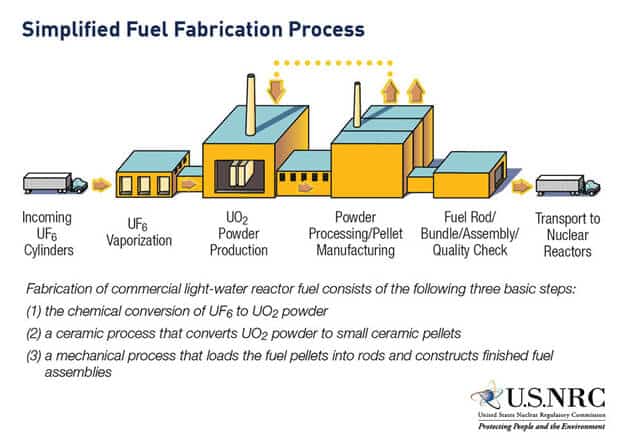
Customer Service
Whenever possible, buy a pellet production line from a reputable company backed by solid customer reviews. Choose one that offers excellent customer service – you want to find a company with a 24-hour turn-around on inquiries whenever you can. This will help set your mind at ease when you encounter problems with your machine.
Although most pellet production lines are easy to operate and experience few issues, proper maintenance is key to keeping the machine healthy. Being able to get in touch with customer service if questions or problems arise is essential, too. The best companies offer onsite support to help with installation, troubleshooting, and repairs as needed.
You may also want to consider a company that offers generous warranties on their products, or at least many of the parts. Some pellet production lines are shipped with things like additional teeth and knives for the machine. That way, you will have everything you need to get up and run – and stay up and running – as efficiently and economically as possible.
What to Consider When Starting a New Pellet Production Plant?
You will need to consider a few factors when you are first starting a pellet production plant.
Types of Raw Materials
What kinds of raw materials do you plan on working within your machine? Different types of raw materials have different traits, including varying lignin and fiber content, both of which can affect how cohesive your pellets are.
These different cohesiveness values can also call for different compression ratios of the die mold – for example, hardwood needs a lower compression ratio. Some raw materials may even need to be mixed with a binding agent, like wax or vegetable oil. You’ll need to consider how you’ll go about securing and working with the type of raw material you’ve decided upon before you can even get your mill up and running.
Size of the Raw Materials
When starting a new production plant, you will also want to give a second thought to the size of the raw materials. If you don’t have a good way of getting your raw materials down to size, you will have an inefficient, poorly operating plant.
Fortunately,
Most pellet production lines you can buy come with components that can help reduce material into the required size – things like hammer mills, wood chippers or crushes, or debarkers.
The size and style of your machine will likely vary depending on the type and size of material use – so you will need to make sure your budget can include this kind of pretreatment equipment. If it can’t, then you might want to reconsider the types of pellets you’re going to make and choose materials that don’t require quite as much treatment before they’re made into pellets.
Technological Processes
Different types of raw materials can be combined and milled together – or you can work with just one material at a time.
Depending on your goals, you may need to get different types of materials. However, it’s important to note that you need to have processes in place to combine these materials effectively and safely. If you throw materials in willy-nilly, it can cause the machine to become unstable and clogged.
Budget and Timeline
There are so many factors that go into starting a pellet production plant. Does your facility have enough electricity amperage to operate a pellet line? Are there safety regulations in place? Do you have a solid workforce?
Most importantly, how quickly do you want to get your enterprise up and running – and what does your budget look like? You may need to make accommodations to allow machinery a longer period to get to you or to make sure you have enough money to finance all of your equipment upgrades.
Before starting a pellet production plant, it’s a good idea to meet with an insurance agent, a certified financial planner, and an accountant, all of whom can help you plan out your business and make sure all of your ducks are in a row.
TCPEL Pellet Line Introduction
TCPEL Pellet Production Line, this pellet production line comes with everything you need to process just about any biomass, including wheat, straw, alfalfa, corn, rice husks, and more. It can be used to produce pellets of all kinds, allowing you to speed up your production process and improve your bottom line.
Whether you want to use this line as a wood pellet production line, a feed pellet production line, or a small biomass pellet production line, this product will ultimately serve as an all-in-one and complete pellet production line that suits anybody’s needs.
A comprehensive line, it comes with everything you need. It has seven main parts: a wood chipper, heating stove, pellet mill, packing machine, cooler, hammer mill, and dryer. It’s truly a one-of-a-kind line that will allow you to make wood chips, flakeboard, animal feed pellets, and more.
Why 1000+ Customers Choose us?
Our Engineers
We employ highly skilled, professional engineers devoted to researching and improving all our products. Our senior engineers are well-qualified with advanced degrees. Our experienced and skillful R&D engineers can help solve your problems regarding the machines or production and assist with after-sales service.
Strict Quality Control
Quality is important to us. We are IS0 9001, CE, and SGS certified. All components used in our machines pass our strict quality inspection. We carry out a trial run for each machine and wearing testing before shipment.
Competitive Pricing
Manage your budget in a smart way and minimize your manufacturing costs. We offer competitive prices for all our machines. Contact our sales team for support for custom solutions.
Professional Sales Team
We have a highly qualified international sales team that will reply to you within 24 hours regarding any pre-sales questions you may have. After sales, we offer 24/7 email and phone communications, and can arrange onsite support.
Full Technical Support
Full 24/7 support both before and after your purchase. We offer free testing to develop the manufacturing process at your business and are dedicated to find the best solution for your specific needs. If you are interested in partnering with us to sell our machines, we are happy to consult with you.
Ordering and Payment
Ordering with us is fast and convenient. Our professional sales team replies quickly to inquiries and strives to solve your problems, both pre-sales and after-sales. We securely accept all forms of payment including T/T transfer, LC at sight, PayPal, and Western Union.
TCPEL Pellet Production Line Features
Still not sure that the TCPEL Pellet Production Line is right for your business? Check out these main features.
1. Strong, Durable Parts: This machine comes with seven core components – the wood chipper, heating stove, pellet mill, packing machine, cooler, dryer, and hammer mill. All are made out of strong, durable materials. Its advanced structure comes with high-quality cutting chippers with moving parts made out of sharp alloy. These materials are wear-resistant and made according to the latest technology. These parts experience low-wear and therefore can reduce our consumption. The hammer mill has strong, carefully-selected double ball bearings and excellent vibration resistance.
2. Multi-Function Mill: This machine can be widely used in all kinds of industries, including livestock feed, chemical production, organic fertilizer, electricity, biofuels, wood pellet production, and more.
3. Low Energy Consumption: This machine offers exceptionally low energy consumption. It reduces up to 50% of your energy needs, produces minimal vibration, and has more than 40% heating efficiency. This can save you money while also helping to save the planet.
4. Easy to Install and Operate: The TCPEL pellet production line is easy to install and operate, especially compared to other options on the market. You’ll have access to a one-stop service that can meet the needs of any customer, from large international companies down to individuals. Your questions will be answered in 24 hours or less with onsite visits available.
5. Versatile and Adjustable: This machine can crush and process all kinds of materials into pellets, including PVC foam board, wood, weeds, straw, and even waste scrubber. Its high-strength steel grinding chamber is durable and offers greater overall efficiency regardless so the type of material you are processing.
6. Automatically Packs and Cools the Pellets: Not all pellet production lines come with coolers and packers, but this one does. It can save you money by bundling all the features you need into one machine.
Complete Process For Pellet Line
Based on different materials, we have suitable pellet lines. The whole process include Material Crushing Section, Drying Section, Pelletizing Section, Pellets Cooling Section and Pellets Packing Section. The production capacity can be 500kgs/h to max 20ton/h, below is our project we customized for our customers capacity 10t/h.
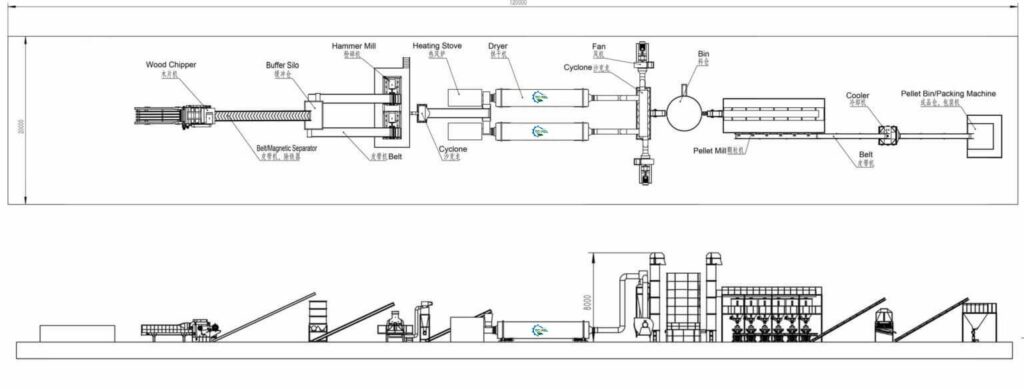
Related Machines for Pellet Production Line
Processing big size materials into smaller chips size, 3-5cm lengh and width ,10mm thickness
Further crushing the chips size material into smaller sawdust size, 3-5mm size sawdust
Drying the sawdust to standard 15% moisture content, prepared for next pelletlizing section.
Pelletizing the ready dried sawdust into pellets. Single set machine capacity can reach 3t/h.
Cooling down the hot pellets into standard temperature, 30-40° normal hot.
Packing the pellets into bags ,small 50kgs/bag or jumbo bag.
FAQs About Pellet Production Line
We are pellet machinery manufacturer since the year 2004, we can offer complete pellet production machinery based on your requirement. Factory landing size 40000㎡ and 350+working staff. And more than 1000+ happy customers domestic and abroad. We have seperate team to arrange sales and after-sales service.
In order to serve you better, please try to provide the below information:
1) What is the material to make pellets? Better if you can share us some pictures
2) Hardness of your material?
3) Moisture content?
4) Maximum diameter of the material to be processed?
5)The capacity per hour you want to get for the pellet production.
Then we will recommend suitable model based on your actual needs.
The process for cooperation is below :
1. Negitation
We will negotiate with you about your requirement, including what’s your material for making pellets,?how much moisture content? how much capacity per hour? budget for the project? plant landing size available etc. Based on them we will customize the solution with our experience and introduce to you.
2. Order Confirmation
After we conclude the production line solution and quotation, we will sign contract and proceed with payment. We accept 30%T/T after confirm the order, and 70%T/T balance before shipment.
3. Manufacturing Process
After we get your deposit payment, we will arrange production accordingly, based on different capacity, our manufacturing time are different. Normally speaking we need 30-45days for whole line capacity under 5t/h, and 45-60days for capacity over 5t/h. For single set machine need about 25-30days based on our manufacturing plan.
4. Machine commission and delivery
After all the machines finished manufacturing, we will test and run all the machines before delivery ,make sure the machine can achieve best performance before delivery, during that time we will send customers the testing videos for confirmation
5. Balance payment and delivery arrange
After customer accept the machines performance, customer should arrange the balance payment to us, after we get the balance, we will arrange to book the ship and arrange delivery for customers. All the machines will be well packed for long distance shipment.
6. Customs documents handover
After all the machines arranged customs in China, we will send all the documents to customers including Bill Of Lading ,Invoice, Packing List, Country Of Orign etc. We will help customers on the customs clearance smoothly.
Our pellet machine can process various materials from forest and agricultural waste. For example wood logs, branches, wood chips, tree leaves, log stump, waste furniture, sawdust, mushroom, rice husk ,rice straw, corn stalk, peanut shell, EFB, bamboo etc. We have different machines and specification which can meet your various materials production requirements, you can contact with your experts team to know more.
To make pellets, we should control the sawdust entering the pellet mill moisture content 10-15%, too wet or too dry will affect the pelletizing result. If you material is too wet, you need a dryer machine to remove the moisture.
Our warranty for pellet production machinery are one year after sale, not including the wear parts. The main wear parts are the ring die and roller.
Because of COVID-19 since 2020, we can not send our engineers to abroad for on site installation, we can offer video help installation after customer receive machines. Before delivery, we will also test all the machines to make sure it can achive best performance, and we will make detailed video to show customers how to install them, and the installation manual will be sent together with the machine. Our after-sales will be ready 24hours to support customers for the whole installation process.

